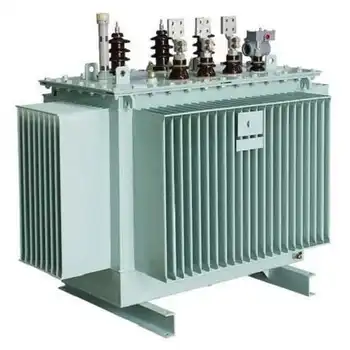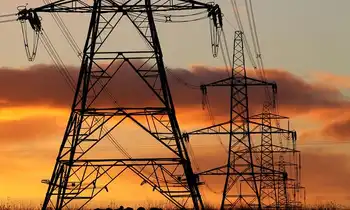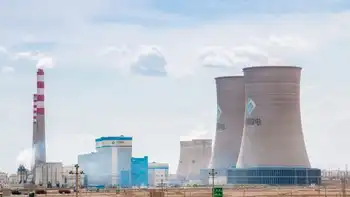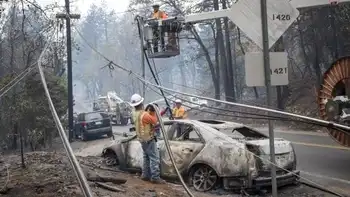High prices create doubt for coal-fired generation
- High natural gas prices and short supplies have prompted a new round of questions in Congress about the advisability of relying on gas-fired power generation to meet future electricity needs. With that in mind, House Energy and Air Quality Subcommittee Chairman Joe Barton (R-Texas) has called a hearing to examine coal's future in the U.S. energy resource mix.
As the cheapest and most plentiful domestic energy resource, many on Capitol Hill have called for coal expansion through cleaner burning technologies given doubts about the availability of gas over the long term. Adding to that groundswell were well-publicized comments from Federal Reserve Chairman Alan Greenspan, who two weeks ago before the House Energy and Commerce Committee advocated increased use of coal, nuclear and liquefied natural gas (LNG) in light of unrelenting gas prices.
Greenspan's emphasis on LNG, coal and nuclear energy, rather than increased domestic drilling for dry gas, has left lawmakers and analysts re-examining expanded use of "clean-coal" technologies. Ken Silverstein, the director of Energy Industry Analysis, says energy policy-makers need to "think differently" about coal moving forward because the industry has done much to clean itself up.
Coal currently generates 52 percent of U.S. power, but most new power plants in this country are gas-fired because of air pollution concerns for coal and waste problems for nuclear. Yet the Institute of Clean Air Companies, which represents manufacturers of clean-coal equipment, says that at least 90 percent of toxins regulated under the Clean Air Act can be removed from coal with new technologies.
Silverstein thus argues that because coal costs about a third of the cost of natural gas, policy-makers should aggressively pursue ideas that cut sulfur dioxide (SO2), nitrogen oxide (NOx) and carbon dioxide emissions. "If coal is going to play a role in future energy production, then it is imperative that those pollutants be cut way down," Silverstein said.
Others say expanded use of coal can protect consumers from price spikes in gas markets. "By making the technology better and thereby providing a new lease on life for certain coal-fired plants, consumers are shielded from the exposure of natural gas-fired power prices, which are considerably higher than coal," says Jeremy Platt, manager of power and fuel markets for Palo Alto, Calif.-based EPRI, an industry-backed research center.
According to Silverstein, today's coal-fired plants have a fuel-to-efficiency rate of 33-35 percent. With the new technologies, such as gasification, that efficiency rate jumps to 45-50 percent, and potentially as much as 60 percent, he said.
The cost: about $1,200 per kilowatt compared to $900 with conventional coal plants.
President Bush's clean coal initiative, included in the House and Senate energy bills, would spread $2 billion over 10 years to help plants upgrade to cleaner equipment. Under the program, LG&E Energy Corp. says that by installing an advanced air pollution control system on a 524-megawatt generation unit, it can reduce SO2 emissions by 99.5 percent while NOx and mercury can be sliced by 90 percent each.
But environmentalists are convinced the clean-coal initiative amounts to subsidies for the coal industry and have little faith in the sector's pledge to move to new technology. They say coal is a dirty source of energy regardless of gasification or scrubber use, and advocate transitioning to renewable sources of energy and demand-side responses to the gas price crisis.
At a House hearing last week on the gas supply situation, the deputy director for the American Council for an Energy-Efficient Economy, Bill Prindle, said the United States can at least partially conserve its way out of a supply crisis. "For the near term -- the next two to three years -- moderating energy demand is the most realistic and effective approach to balancing natural gas markets," Prindle said.
Frank O'Donnell, director of the Clean Air Trust, said he sees nothing ominous in Barton calling a hearing but fears Republicans may be using the gas crunch as a pretense to discuss suspending emissions standards under the Clean Air Act or rolling back mercury controls. O'Donnell also expects natural gas production to recover quickly, because the economy is still struggling and power consumption is running low due to mild weather.
"The fluctuating gas situation would be a flimsy excuse to call for weaker standards on coal burning," O'Donnell said.
Related News

Hydro One stock has too much political risk to recommend, Industrial Alliance says
TORONTO - A seemingly positive development for Hydro One is overshadowed by ongoing political and regulatory risk, Industrial Alliance Securities analyst Jeremy Rosenfield says.
On October 4, staff from the Washington Utilities and Transportation Commission filed updated testimony in support of the merger of Hydro One and natural gas distributor Avista.
The merger, which was announced in July of 2017 has received the green light from federal and key states, with Washington, Oregon and Idaho being exceptions.
But Rosenfield says even though decisions from Oregon and Idaho are expected by December, there are still too many unknowns about Hydro One to recommend investors…




